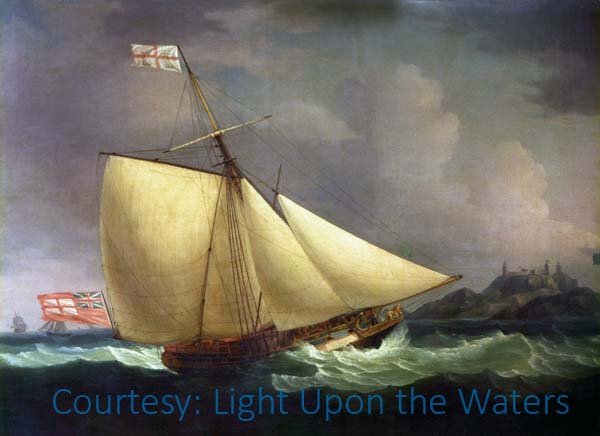
On 20 May 1514 Henry VIII presented a Royal Charter to a guild of mariners troubled by the poor conduct of unregulated pilots on the Thames, incorporating The Master Wardens and Assistants of the Guild Fraternity or Brotherhood of the Most Glorious and Undivided Trinity and of Saint Clement in the Parish of Deptford Strond, the Corporation’s full name to this day.
Their general business was:-
“to improve the art and science of mariners; to … regulate the conduct of those who take upon them the charge of conducting ships; to preserve good order, and … to consult the conservation, wholesome government, maintenance and increase of navigation and sea-faring men; and to relieve decayed seamen and their relatives.”
In 1566 Queen Elizabeth I’s Seamarks Act enabled them:-
“at their wills and pleasures, and at their costs, [to] make, erect, and set up such, and so many beacons, marks, and signs for the sea… whereby the dangers may be avoided and escaped, and ships the better come into their ports without peril.”
With the increasing number of ships lost between Newcastle and London, Trinity House established the Lowestoft Lighthouse in 1609. Until the late 18th century fires were used as illuminants, improved in 1782 with the oil-burning Argand lamp, the first ‘catoptric’ reflector in 1777 and Fresnel’s ‘dioptric’ lens system in 1823; the Nore lightvessel was established as the first floating light in 1732. In 1836 Trinity House accepted powers to levy out the last private lighthouses and began the arduous task of building some of that era’s most remarkable designs.
Trinity House played its part during the First and Second World Wars, buoying shipping lanes and naval operations, including 73 lighted buoys and two lightvessels for the D-Day landings, with Trinity House pilots responsible for all commercial vessels and many of the service vessels.
1969 saw the debut of helicopter reliefs to and from lighthouses, ending the tradition of keepers being stranded by foul weather. The completion of the lighthouse automation programme came with North Foreland Lighthouse on 26 November 1998.


By the 1960s 500 Trinity House pilots were handling an estimated 60% of the nation’s piloted tonnage. 1987’s Pilotage Act saw Trinity House passing its district pilotage responsibilities to various local harbour authorities, becoming instead a licensing authority for deep sea pilotage.
As a charitable body, the Corporation disperses funds for the welfare of retired seamen, the training of cadets and the promotion of safety at sea.
Looking forward, the sea will continue to play a vital role in maintaining the way of life we all take for granted. As Captain Ian McNaught, Executive Chairman of Trinity House, said:
“With over 90% of goods entering the UK having spent some or all of their journey to our shores by sea our lives would be very different without our mariners and to them we say thank you.”
Since the Royal Charter of 1514, Trinity House has worked hard to ensure its utility to the mariner as a General Lighthouse Authority, a major maritime charity and a Deep Sea Pilotage Authority.
For a full history of Trinity House, Light Upon The Waters by Richard Woodman and Andrew Adams is available from www.trinityhouse.co.uk

Comments
Sorry, comments are closed for this item